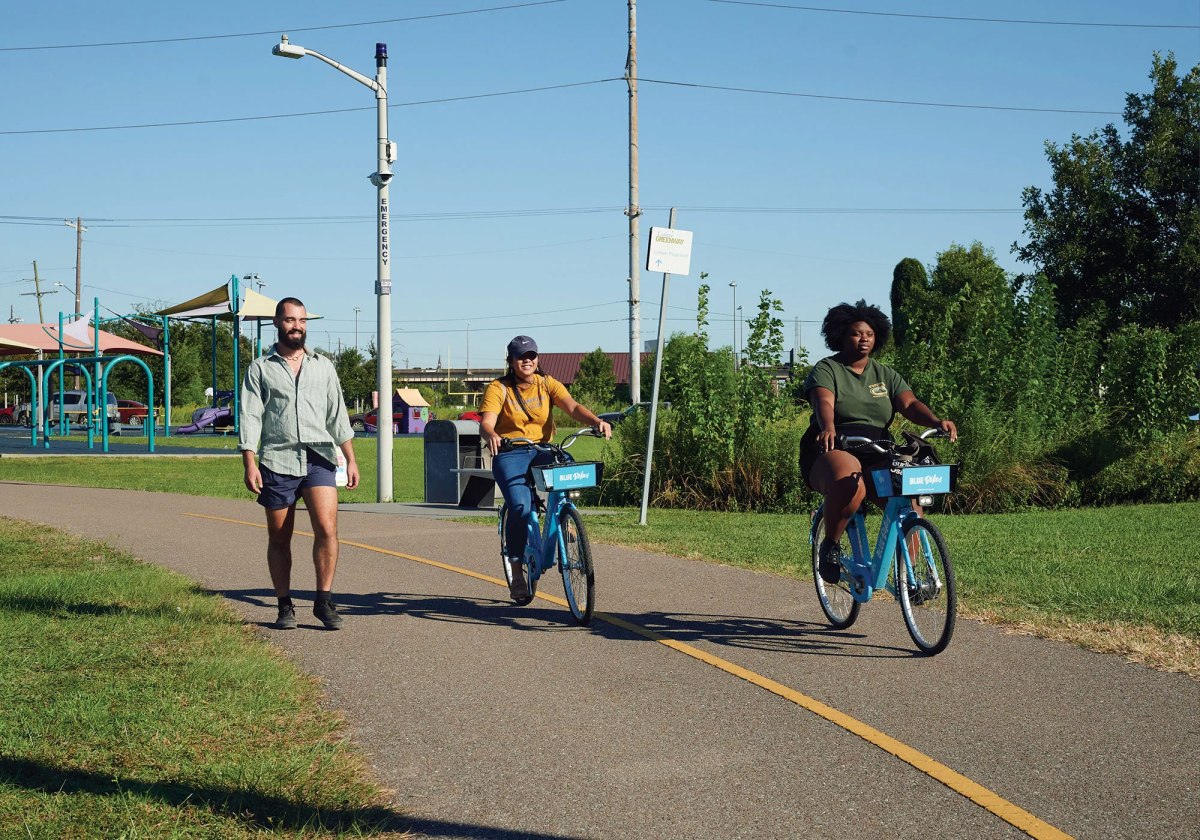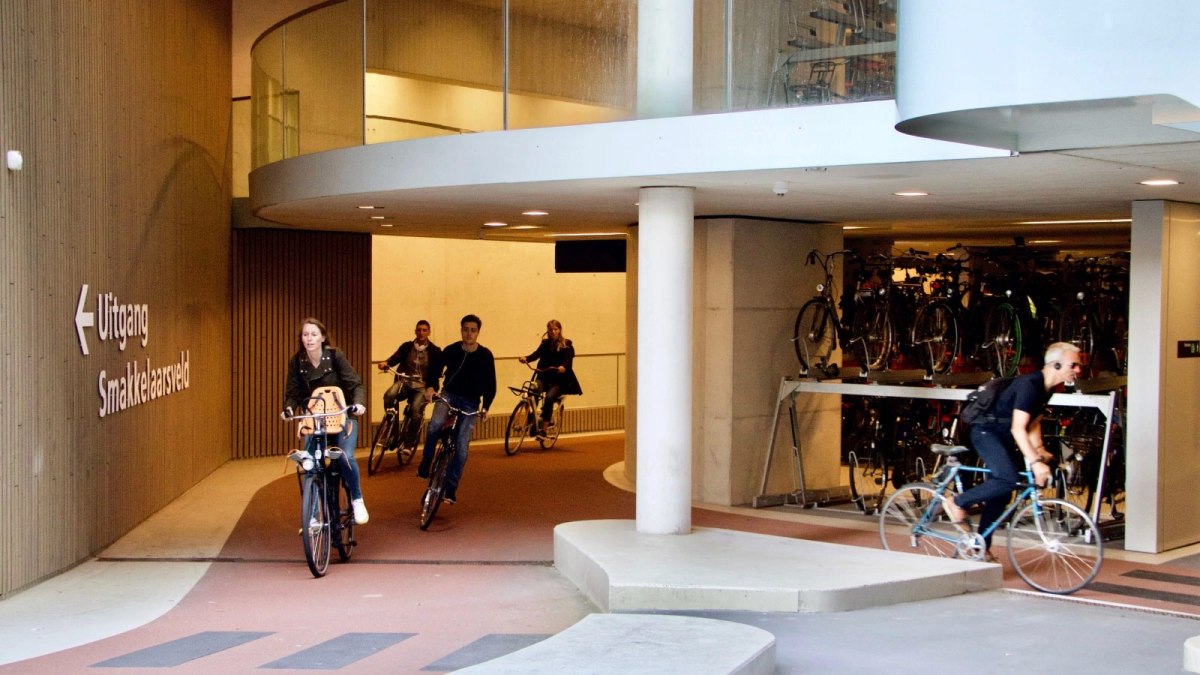
Welcome to Looking Forward’s very first special series: Cities + Solutions. Over the next week, we’ll take you all across the country to explore how cities are leading the charge on climate and environmental justice. These stories highlight the many ways that community members and local governments are transforming the places they live, and providing models for how real change can be enacted.
We’re publishing each story first here in the newsletter, and I’m so excited to share with y’all these case studies in imagination, persistence, and collaboration in both expected and unexpected places. Like I mentioned last time, this series started as an idea from the Looking Forward community — you all were curious to see examples of cities taking novel approaches to climate solutions and getting results. Some of you have also shared stories from within your own communities. We would love to hear more! If any of these tales inspire you to take action locally, or if you’d like us to know about something cool happening where you live, please drop us a note anytime.
For the first story in our series, we start in New Orleans, a city that is no stranger to climate disaster. Writer Gabriela Aoun Angueira chronicles what happened when corporate owners abandoned a bike-share program in New Orleans — the community took it over, made it more equitable, and ensured that it served residents in ways the old program hadn’t.
— Claire Elise Thompson
The vision
“If you want a successful transportation network, you have to build it for the people who live there. You have to do the deep work of community engagement and really trying to understand how people are moving. Go with intentionality and speak with the community first.”
Patrick Urbine, community engagement manager for Blue Krewe in NOLA
The spotlight
Geoff Coats still remembers how he felt when, in May 2020, all 1,350 bicycles in New Orleans’s popular bike-share program vanished.
“It was horrible,” says Coats, who managed the service, called Blue Bikes, for its owner, Uber. “For a lot of people, it was a little bit of PTSD from Hurricane Katrina, when the national chains could have reopened weeks after the storm but stayed away. It felt like, once again, when we’re down, we get kicked.”
Blue Bikes, which New Orleans launched in 2017 to reduce emissions and offer reliable transportation to low-income residents, was flourishing before COVID shut down the city. It had recently converted all its pedal bikes to electric and was in the process of doubling its fleet. But Uber paused the program when the pandemic hit, then spun it off to the micromobility company Lime as part of its investment in that company. Lime wanted to bring electric scooters to New Orleans. The city wasn’t interested in scooters and eventually canceled the contract. Seemingly overnight, the bikes were gone.
Of the nearly 300 bike-share and scooter-share programs in North America, more than half are privately owned, a figure that is quickly growing. That leaves most micromobility programs vulnerable to market whims, a precarious position for a mode of transportation upon which many people depend. Lime’s departure could have been the end of bike sharing in New Orleans. Instead, Coats began devising a plan to bring it back.
But this time, he decided, Blue Bikes would be run by the community it served.

The origins of New Orleans’s bike-share program date to the aftermath of Hurricane Katrina. As New Orleans began to imagine what rebuilding could look like, residents called for better transportation options. In a city of more than 375,000, about one in five New Orleanians does not own a car. Without reliable transit, getting anywhere — to work, the supermarket, a doctor’s appointment — is difficult.
New Orleans built its first bike lane in 2008. Within seven years, it had over 100 miles of lanes and trails, including Lafitte Greenway, a park connecting the French Quarter to other neighborhoods. As biking infrastructure grew, so did the community’s ambitions. “They started to say, ‘Hey, other cities are starting to do this thing called bike share,’” says Coats. “‘What if we could do that?’”
New Orleans’s first foray into bike sharing started promisingly enough: In 2016, the city signed a five-year agreement with Brooklyn-based bike-share outfit Social Bicycles (later renamed Jump) and hired Coats, an entrepreneur and lifelong cyclist, to manage the program. Blue Bikes launched in 2017 with 700 bicycles. But then, in 2018, came the first of two ownership changes as the program bounced from Jump to Uber to Lime.
Although New Orleans canceled its contract with Lime, it still wanted bike-sharing options. “The city was very committed to the original goals of providing affordable, equitable transportation,” says Dan Jatres, New Orleans’s infrastructure projects administrator. “So the conversation shifted to, ‘What is the next step?’”
As Coats packed up the warehouse and said goodbye to employees he had to lay off, he started making plans to revive Blue Bikes. He donated Jump’s bike stands and tools to local nonprofit Bike Easy, under the condition that it would return them if he managed to relaunch Blue Bikes. He secured financial support from the program’s original title sponsor, Blue Cross and Blue Shield of Louisiana, as well as the Greater New Orleans Foundation. Within three months, Coats and his sponsors were ready to approach the city.
They proposed that Blue Bikes be run by a new nonprofit called Blue Krewe. The city would provide space for bike racks and waive permit fees. The two funders would provide the capital for startup costs, including a fleet of bicycles. The City Council unanimously agreed. By September 2021, residents were kicking their legs over 500 shiny new rides in neighborhoods throughout New Orleans. Since then, they’ve made more than 289,000 trips.

Cyclists in New Orleans take a spin on electric bicycles owned by the community-focused nonprofit bike-share program Blue Bikes. Courtesy of the Friends of Lafitte Greenway
Jatres says switching to a nonprofit model has allowed New Orleans to build a bike-share program better aligned with the city’s goals of providing affordable, equitable transportation. “If you’re a private company, you ultimately have a profit motive,” he says. “And that’s not always in line with providing transportation in areas that have historically been underserved.”
Blue Bikes costs less to use now — just 15 cents per minute, or $25 a month for a membership. People who use Medicaid or SNAP benefits pay only $4. The program covers roughly the same area as before, but Blue Krewe has a review process to ensure bikes are distributed equitably. There is an emphasis on connecting people in less advantaged areas to their jobs downtown and in the French Quarter.
Coats is especially proud that Blue Krewe has abandoned the gig-economy employment model and hired 20 full-time mechanics, technicians, and other employees who earn a living wage with health and retirement benefits. “We wanted to ensure that [transportation] equity wouldn’t be delivered on the backs of an inequitable labor model,” he says.
Patrick Urbine, Blue Krewe’s community engagement manager, says the nonprofit model lets him design programs people need, without worrying about whether his ideas are scalable across a multinational company. Blue Bikes offers 30-minute ride vouchers to people who attend fitness classes in Lafitte Greenway. It also covered rides to flu and COVID vaccine appointments, and is expanding a program that locates stations near health clinics in underserved areas.
“One of the riders I chatted with lost 40 pounds because he was riding Blue Bikes every single day,” says Urbine. “It is proof that Blue Bikes are a form of affordable, healthy, and fun transportation for folks.”

In December, New Orleans released its new climate action plan. It calls for half of trips within the city to be non-automotive by 2030. Blue Bikes will play an important role in reaching that goal — the plan calls for expanding its fleet from 800 to 2,000 bikes.
Right now, the Blue Bikes fleet is about half as big as it was under Uber, underscoring one tradeoff that comes with eschewing corporate stewardship: Funding is harder to come by. “We’re doing more incremental growth at a pace that matches the financial realities,” says Jatres. “While that’s different from a private system, I think ultimately it will be more sustainable.”
The number of bike- and scooter-share programs in North America is rising. From 2020 to 2021, such programs grew by about one-third. As more cities embrace micromobility options, Coats believes New Orleans’s community-driven approach can serve as a model.
Launching such a program, he says, is easier than when he started in 2016. “Now there are people who will sell you bikes, there are people who have the management software, the apps.” To other places considering a nonprofit model, he recommends leveraging what those companies can provide and focusing on what they cannot: a genuine connection to the people being served. “You know your community better than anyone will.”
— Gabriela Aoun Angueira
More exposure
- Read: a story about New Orleans’s efforts to make its streets safer for cyclists (Grist)
- Read: a set of strategies for making micromobility programs more equitable (Next City)
- Read: a previous Looking Forward about bike equity, and the work of Courtney Williams, aka the Brown Bike Girl
- Listen: to a podcast about “community mobility rituals” — regularly scheduled events that get residents out walking, biking, or riding pub trans (The Brake)
A parting shot
As long as we’re talking bikes, we’ve got to give kudos to another city: Utrecht, Netherlands, has made a name for itself as one of the most bike-friendly cities in the world, and is home to the world’s largest bike parking garage — with a capacity of over 12,500.

This special series is, like all of Grist’s content, totally free, and available to all. No subscription fees, no paywalls — ever. If you’re keen to support the reporting, writing, editing, and art-ing that goes into bringing stories like these to your inbox, you can do that here!


